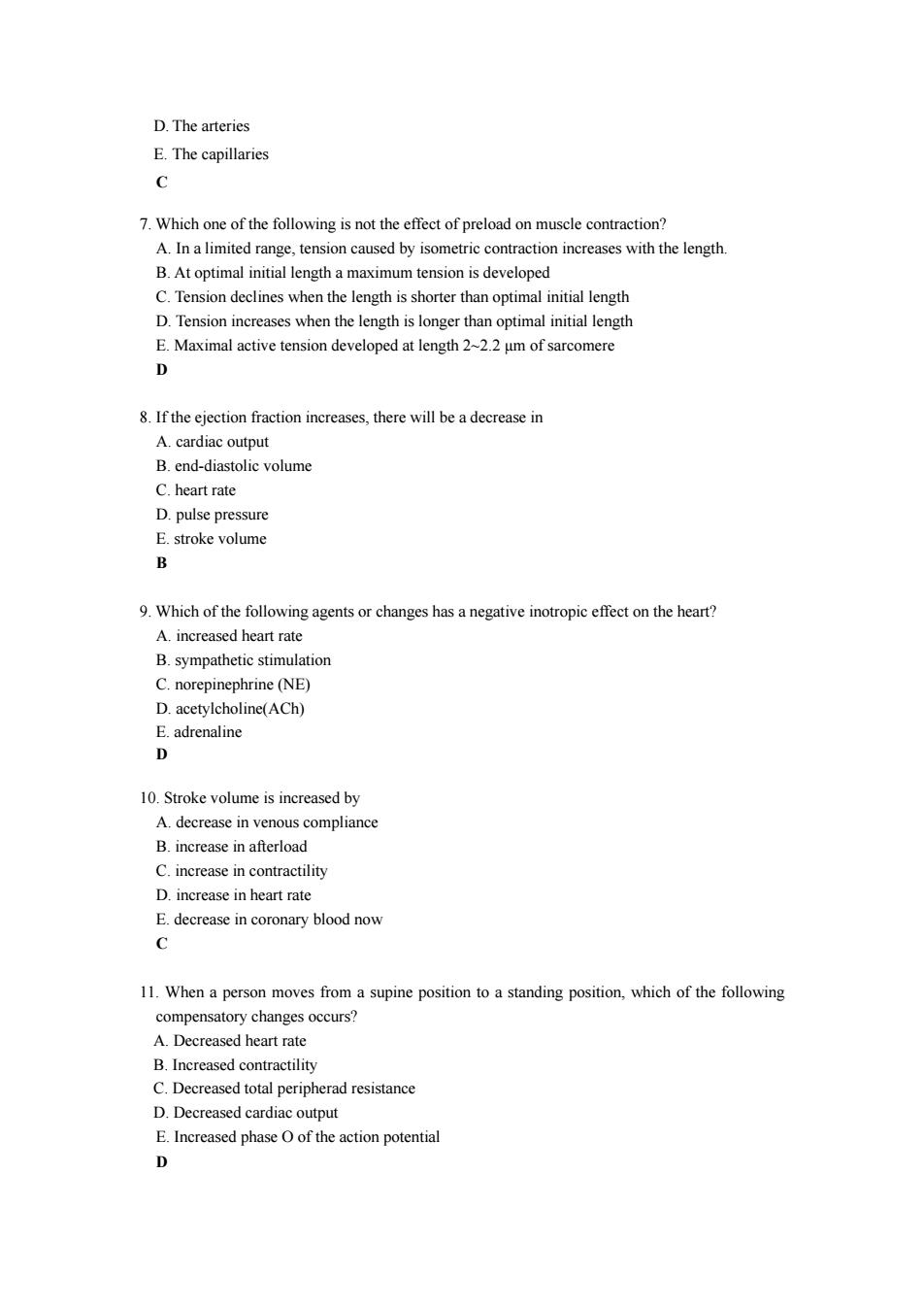正在加载图片...

D.The arteries E.Thecapillaries 7.Which one of the following is not the effect of preload on muscle contraction? A.In a limited range,tension caused by isometric contraction increases with the length B.Atoptimal initial tension is develope C.Tension declines when the length is shorter than optimal initial length D.Tension increases when the length is longer than optimal initial length E.Maximal active tension developed at length 2-2.2 um of sarcomere 8.If the ejection fraction increases,there will be a decrease in A.cardiac output B.end-diastolic volume C heart rate D.pulse pressure E.stroke volum 9.Which of the following agents or changes has a negative inotropic effect on the heart? A.increased heart rate B.sympathetic stimulaion C.norepinephrine (NE) D.acetylcholine(ACh) E.adrenaline D 10.Stroke volume is increased by A.decrease in venous compliance B increase in afterload C.increase in contractility D.increase in heart rat E.decrease in coronary blood now C 11.When a pers moves from a supine position to a standing position,which of the following compensatory A.Decreased heart rate B.Increased contractility C.Decreased total peripherad resistance D.Decreased cardiac output E.Increased phaseofthe action potentia D D. The arteries E. The capillaries C 7. Which one of the following is not the effect of preload on muscle contraction? A. In a limited range, tension caused by isometric contraction increases with the length. B. At optimal initial length a maximum tension is developed C. Tension declines when the length is shorter than optimal initial length D. Tension increases when the length is longer than optimal initial length E. Maximal active tension developed at length 2~2.2 µm of sarcomere D 8. If the ejection fraction increases, there will be a decrease in A. cardiac output B. end-diastolic volume C. heart rate D. pulse pressure E. stroke volume B 9. Which of the following agents or changes has a negative inotropic effect on the heart? A. increased heart rate B. sympathetic stimulation C. norepinephrine (NE) D. acetylcholine(ACh) E. adrenaline D 10. Stroke volume is increased by A. decrease in venous compliance B. increase in afterload C. increase in contractility D. increase in heart rate E. decrease in coronary blood now C 11. When a person moves from a supine position to a standing position, which of the following compensatory changes occurs? A. Decreased heart rate B. Increased contractility C. Decreased total peripherad resistance D. Decreased cardiac output E. Increased phase O of the action potential D